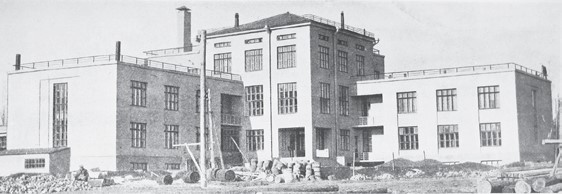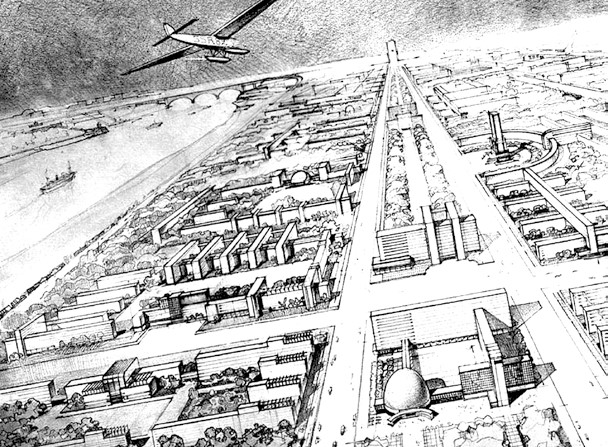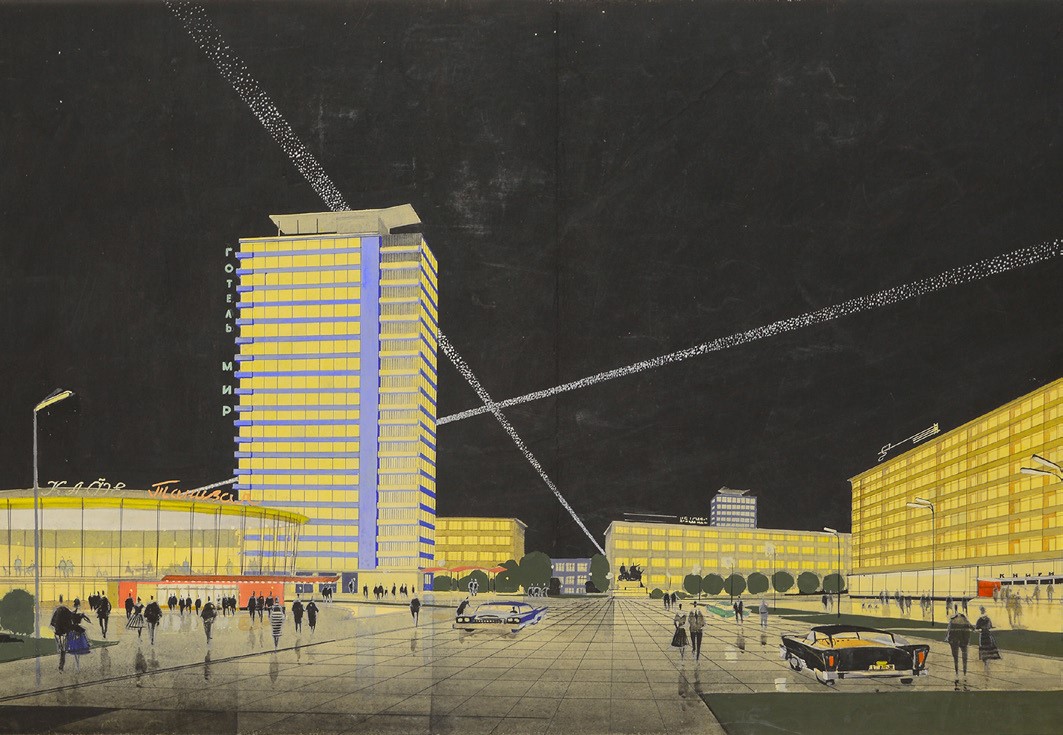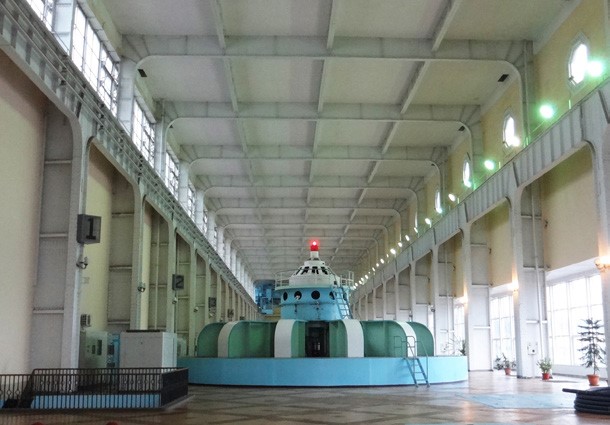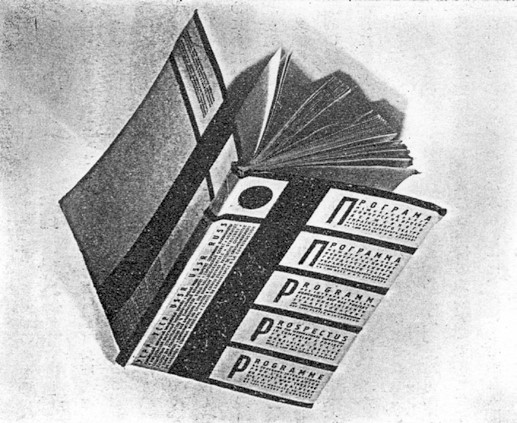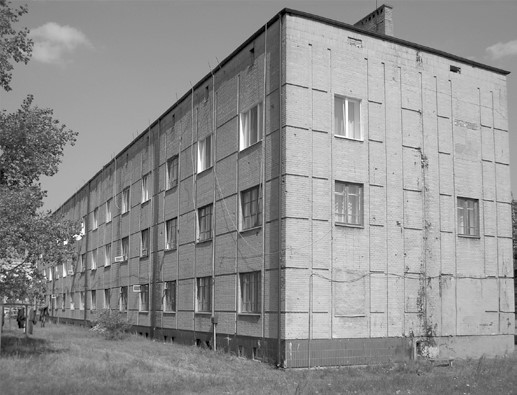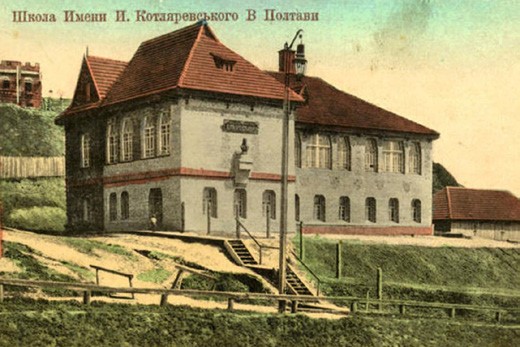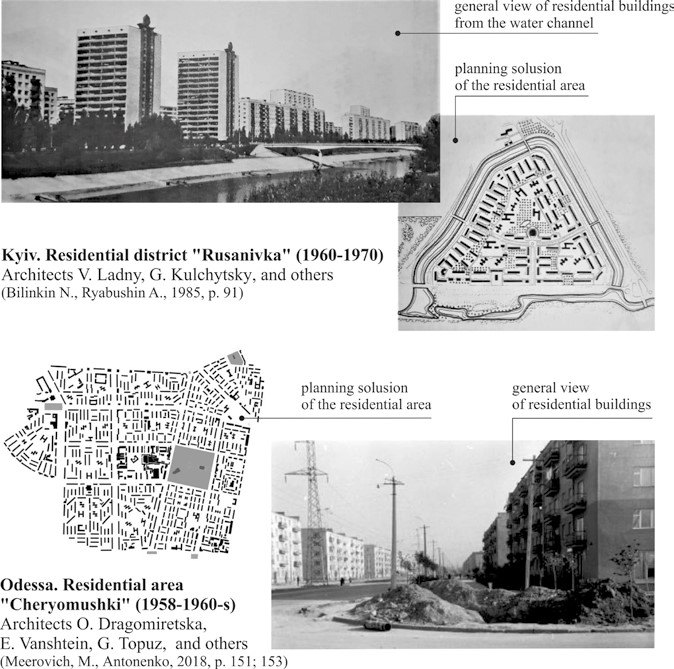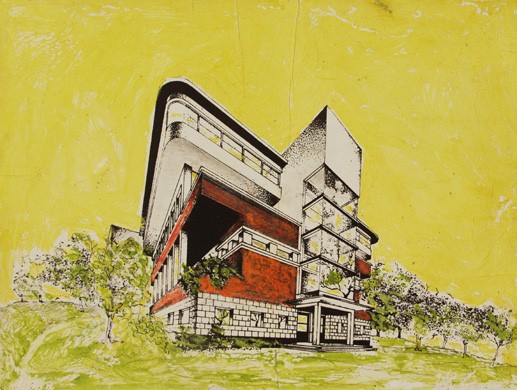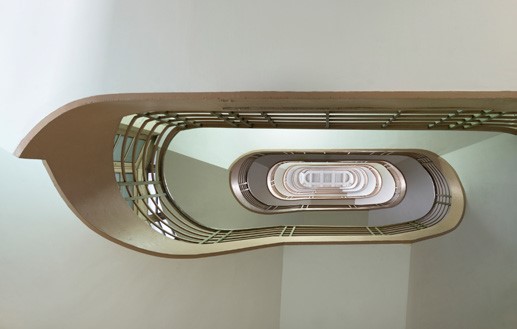
Editors: Uta Pottgiesser, Wido Quist
Keywords: Ukraine, Modern Movement, Modern architecture, interwar modernism, soviet modernism
This special issue of DOCOMOMO Journal reflects on the different influences and forms of Modern Movement on the current territory of Ukraine during the 20th Century. The Journal provides an overview of buildings and sites and the threat that this modern heritage encounters as it is not listed at a national or international level and in times of the ongoing war.
Editorial
-
When moving the Docomomo Headquarters to Delft in January 2022, it announced a new cycle of the Docomomo journal by turning the journal fully open access and by introducing a peer-review process. This allows for further scientific indexation of the journal and attracting a wider range of authors. In September 2022 the Docomomo Journal was indexed by Scopus and the issues 1-65 from 1990-2021 are available online in our Docomomo journal Archive. Since then, the Docomomo Journal 66 on Modern Plastic Heritage was published and with this Docomomo Journal 67 we are approaching the country that...
Essays
-
The article reflects on the status of modern World Heritage sites in general and in particular related to Ukraine, and the specific typologies of infrastructure and modern urban planning – both closely related to each other. The current war and the disastrous destruction of urban and civil infrastructure have again raised the question of its public perception, official recognition and national and international protection. Next to the internationally known Derzhprom complex, the cnstruction of Dneprostroj, the Dnipro Hydroelectric Station (DneproGES/DniproHES), the erection of a new...
-
The history of the Ukrainian state, as well as the history of Ukrainian architecture in the 20th century, was more than turbulent. Wars, revolutions and changes in architectural development according to the course of the political establishment had a negative impact on archiving and preserving the memory of previous periods. Unfortunately, since the full-scale Russian invasion on February 24, numerous monuments, buildings and heritage sites have been exposed to danger again or have already been destroyed. By November 7, 2022, UNESCO confirmed the destruction or war damage of 213 cultural...
-
In Ukraine, heritage has been a battlefield since World War II. In those years, the Kyiv reconstruction was dominated by Russian architects, and Ukrainian architects were marginalized in their own city. However, restoration of churches slowly became a topic where policy changed from Stalin’s doctrines to his successors’ principles, and where Ukrainian builders managed to gain some success in heritage protection. This prevailed more after independence in 1991. The present war that Putin triggered against Ukraine is accelerating heritage issues. The destructions of this war have hit all...
-
This article is devoted to the search for answers to several burning questions: what is the uniqueness of the industrial, civil and residential architecture of Ukraine in the 1920s - early 1930s? Does it need to be preserved? Why did foreign architectural criticism call these years the “heroic period of architecture”, yet the early Modernism of that time is still not appreciated at its true worth in its homeland? What was ‘heroic’ in the architecture of Ukraine and its first capital, Kharkiv? A brief analysis of the political and economic situation in which the newly-born independent...
-
Even although the International Competition for the State Ukrainian Theater (1930) did not result in any construction, it was a major landmark of Modernism in Ukrainian architecture. The competition received 144 entries from Soviet Union states and other countries, including four individual and one team proposals from Japan. Of these, Renshichiro Kawakita, a 29-year-old architect from Japan, was awarded the fourth prize and ranked higher than world-famous architects and designers like Walter Gropius, Norman Bel Geddes, and Hans Poelzig. This article deals with the modernist architectural...
-
The heritage of the architectural Avant-garde in Ukraine, formed in the interwar period (1921-1939), is large-scale in the number of objects and diverse in their typology, techniques and forms of expression of modern architectural ideas. Volyn – a historical Ukraine region that, at that time, was part of Poland (the Second Polish Republic) – plays a special role in this context. To date, the region has preserved a significant array of objects that demonstrate the specifics of the interpretation of European and Polish Avant-garde concepts. The article attempts to analyze the architectural...
-
The national identity of Ukrainian architecture in the early 20th century manifested itself in the formation and development of the style of Ukrainian Modernism. This style was formed and spread in different regions of Ukraine as an original national style based on modern European achievements. Today, the issues of preserving its independence and national authenticity in architecture have become very important for Ukraine. Understanding the architectural style based on national traditions can guide the future development of Ukrainian architecture. The article considers Ukrainian...
-
The housing issue is rightly considered one of the most acute problems of humankind. It is generated by social causes and has a social meaning. The housing issue cannot be solved with purely technical, architectural or artistic approaches. Rather, it also depends significantly on economic, political and environmental circumstances. At different times, the nature of the living environment was formed under the influence of social order, the level of development of productive forces, household and economic systems, and other factors. In the second half of the 20th century, following...
-
This article attempts to demonstrate the changes that occur over a certain period in assessing the cultural heritage of different eras—from the scientific interest of individuals to wide public recognition. Today, the status of architectural monuments starts to be given to objects of the 1960s and 1980s, but these processes are accompanied by scientific and organizational problems. As an example, the author took the case of Kyiv, which includes many modern buildings of the 1920s-1930s and 1960s-1980s. The research is relevant, primarily considering the interest that modern architecture...
-
The Triennial of Modernism originated in 2013 from a cooperation between Berlin, Dessau and Weimar in Germany. Since then, the cultural, architectural and intellectual heritage of the epoch has been brought into the focus of the general public every three years, so far in 2013, 2016, 2019, and in 2022. The festival grew as a bottom-up and cross-sectoral network, with rising partnerships in Germany and abroad—projected to become a European Triennial of Modernism. A cross-city motto is determined in advance, which can also take into account special anniversaries or theme years. In 2022, a...
Heritage in danger
-
In June 2022, UNESCO General Director, Audrey Azoulay warned that relentless attacks on Ukrainian cultural sites must cease. Yet, those have only further intensified since and as of early November 2022, according to the count made by her organization, 212 cultural sites had been totally or partially destroyed in Ukraine, among which 92 religious sites and 94 landmark buildings, monuments or historical sites, but also 16 museums and 10 libraries. To an organization founded in 1945 upon the rubble of WWII and whose mission notably consists in protecting world tangible and intangible...
Book Reviews
-
Ukrainian architecture is scarcely represented in Western libraries. And there are few Western investigations that specialize in the Ukrainian Modern Movement. For a long time, Selim Omarovich Khan-Magomedov’s book ‘Pioneers of Soviet architecture’, first published in the German Democratic Republic in 1983 as ‘Pioniere der Sowjetischen Architektur. Der Weg zur neuen sowjetischen Architektur in den zwanziger und zu Beginn der dreißiger Jahre’, has been the best known source on this subject accessible for Western scholars. In 1987, this book was translated and published in English by...

